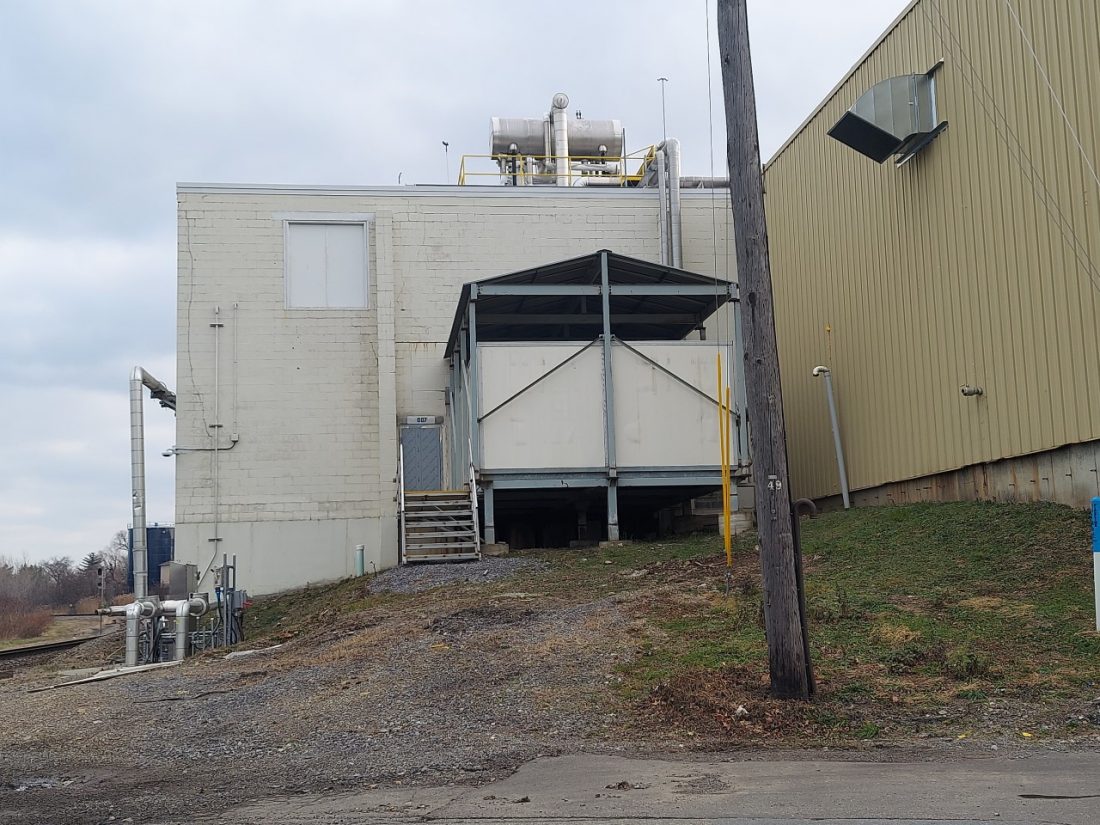Ground-level ammonia tank OK’d for Wells

OBSERVER Photo by M.J. Stafford Wells wants to place a ammonia tank next to its Main Street ice cream factory, on the slope seen here. The factory’s current ammonia tank is visible on the roof.
The Dunkirk Planning Board tentatively approved a ground-level ammonia tank at the Wells plant on Main Street.
The board’s approval, given at a meeting this month at City Hall, is contingent upon the submission of a plan for security fencing and signage. Board members were concerned that the original site plans submitted to them did not clearly show the measures taken to cut the public off from the dangerous chemical.
Chris Hadden of Wells explained during a presentation that because the plant’s current ammonia receptacle is atop the building, “we’re having some operational issues.” He said moving the tank will “help the process. … Locating this on ground level will more or less eliminate a lot of the issues we’re having.” The new tank would be directly below the current one, at the northwest side of the building, which is only a few feet away from Main Street and railroad tracks.
Hadden went on to say that while Wells originally envisioned a larger, two-platform design, “we’ve evolved a layout that minimizes our footprint on the ground.” He said they are “trying to move this structure as tightly to the building as possible.”
The tank would have pumps and pipes connecting it to the factory and would be placed on four piers to level it out in relation to the grade. It would be about 10 1/2 feet tall. The old tank on the roof would get removed once the new receptacle is in place.
Planning Board members peppered Hadden with questions about safety measures for the site. He said there would be security fencing, and/or a gate, around the tank to keep people away from it. Hadden added that state and federal regulations will mandate the placement of hazard signs on and around the structure.
“We don’t want any public access to this. That’s just a detail we didn’t put in this layout,” he said.
Planning Board member John Mackowiak asked if there would be security cameras by the tank. Referring to the plant security team, Hadden replied, “I know that they have a vision as to where they want to start putting cameras. It is something we could recommend to them.”
Responding to a question from board member Frank Torain, Hadden acknowledged that to be 100 percent sure of a leak, plant officials would have to do a visual inspection of the tank. However, for day-to-day monitoring, there are “an automated system tied into the overall utility monitoring” and regularly mandated inspections.
The Planning Board wound up accepting the Wells plan — as long as the company provides a new drawing showing the layout of the security fencing, and also specifies what hazard signs will be placed at the site.




